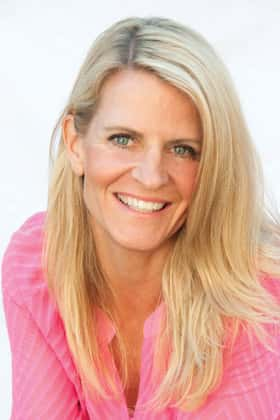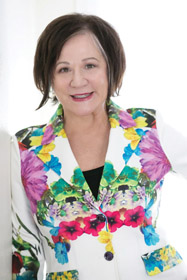When people ask Maureen Merrill if she likes millennials, she thinks to herself, “It depends on the millennial!”
All of us differ across natural or developed preferences and tendencies, she explains, such as expressiveness, cheery attitudes, self-discipline and consideration for others. “Yet, one of the ways that humans differ from one another is in our culture, and baby boomers—which I like to call ‘the coolest generation’—definitely grew up in a vastly different culture from people who are in their 20s today.”
Merrill is principal at Santa Rosa-based Merrill Communication Consulting, specializing in team retreats, presentation skills and communication workshops. In her practice, she’s coached many millennials on an individual basis, including winemakers, bankers, engineers, public safety officers, lawyers and accountants. Her business clients frequently send their office and technical employees to her for customer service training.
“A multigenerational workforce means a multicultural workforce,” says Merrill, an admitted baby boomer. “The differences in generations should be viewed as cultural differences, and we can all reach across, understand, appreciate, integrate and listen. There’s research and science behind that perception, and we need to use it.”
We were all young once
 When you think about it, we’ve all been “millennials” at one point in our careers, says Brenda Gilchrist, co-owner of The HR Matrix, a full spectrum human resources, organization development and recruitment firm in Santa Rosa. “I believe millennials are getting a bad rap. You, me and colleagues in our age group all have memories of being young, a bit naive, ambitious and inexperienced. Most of us started work at a young age. I started my human resources career at age 22 and started my first HR firm at 32.”
When you think about it, we’ve all been “millennials” at one point in our careers, says Brenda Gilchrist, co-owner of The HR Matrix, a full spectrum human resources, organization development and recruitment firm in Santa Rosa. “I believe millennials are getting a bad rap. You, me and colleagues in our age group all have memories of being young, a bit naive, ambitious and inexperienced. Most of us started work at a young age. I started my human resources career at age 22 and started my first HR firm at 32.”
The HR Matrix has encountered a different mindset in working with a multigenerational clientele. “The younger generation has a high aptitude for leveraging technology, social media and apps to generate business for networking, for managing workflow and, in some cases, to create a paperless work environment,” says Gilchrist.
Advances in technology and our approach to work have changed, she adds, but it did so when we were younger, too. “Business is always in a state of change, and next-generation applications, research and approaches develop. The question we should be asking ourselves is, how can we leverage each other’s skills, experiences, talents, drive, passion and approaches to our work? We can all learn from each other.”
 Job Tango in Healdsburg, founded less than one year ago, works with small employers in the North Bay and throughout the Bay Area that need human resources and/or recruitment assistance and support. The company also works closely with job seekers who may be searching for their first jobs or are ready for a job change. The company’s two co-founders, Susan Halstead and Lindsey Brown, “share a brain,” says Halstead, a self-proclaimed member of the boomer generation. “Job Tango consists of me—a person who was ready to wrap up a long corporate career in recruiting—and Lindsey, a millennial who wanted to move forward in her HR career. The two of us complement each other well. Businesses can thrive and benefit from having a multigenerational employee base.”
Job Tango in Healdsburg, founded less than one year ago, works with small employers in the North Bay and throughout the Bay Area that need human resources and/or recruitment assistance and support. The company also works closely with job seekers who may be searching for their first jobs or are ready for a job change. The company’s two co-founders, Susan Halstead and Lindsey Brown, “share a brain,” says Halstead, a self-proclaimed member of the boomer generation. “Job Tango consists of me—a person who was ready to wrap up a long corporate career in recruiting—and Lindsey, a millennial who wanted to move forward in her HR career. The two of us complement each other well. Businesses can thrive and benefit from having a multigenerational employee base.”
The firm’s clients include small employers in the North Bay and South Bay who need HR recruitment assistance and support, but Job Tango also works closely with young people searching for their first professional jobs. “We show millennials how to build a résumé around light work experience and still come across as qualified and competent for the job they’re seeking,” says Halstead. “There’s something to be said about meeting with an expert who’s experienced in job searching and recruiting. Millennials have so many resources at their fingertips, but many of them encounter a humbling moment when they realize they need professional assistance with their job search.”
Find their passion
For Halstead, coaching a new client starts from the first moment she meets the person. “I learn what they’re passionate about and the direction they want to move in. Many millennials feel like, ‘I have a degree now, and so people will want to hire me.’ They think the jobs will just materialize, but then reality sets in when they see how much competition is out there. For someone just starting out, job hunting can be a daunting task. Having a résumé you can feel proud of is really the first step. Most millennials have solid experience using social media for fun but have never used it on a professional level for networking, which is critical for landing a job in today’s competitive job market.”
Young professionals must understand that most of them won’t land their dream job right away, adds Brown. “They may hear about people their age in their first jobs earning six figures, but that’s the exception. Just getting started and getting work experience is so important. Once they have a job, the ability to network increases tenfold.
“Part of me believes that many millennials will feel constantly unsettled, thinking that success will always be the carrot right in front of them. Many of them may be looking to jump on a new startup or a new technology.”
 Merrill says adults under the age of 30 are far more likely than those over the age of 50 to think first of their own rights, needs and preferences in the workplace environment. “It doesn’t help to label this behavior as millennial self-centeredness; it’s what they’ve learned about how to be in the world. However, when they see how a practice, work requirement or custom has meaning, they respond readily.”
Merrill says adults under the age of 30 are far more likely than those over the age of 50 to think first of their own rights, needs and preferences in the workplace environment. “It doesn’t help to label this behavior as millennial self-centeredness; it’s what they’ve learned about how to be in the world. However, when they see how a practice, work requirement or custom has meaning, they respond readily.”
As an example, she points out that some young people in her customer service workshops showed a dislike for wearing a nametag on the job. “The feeling was that they were ‘labeled’ by a nametag. However, when the conversation revealed that nametags made many customers—some of whom are older—more comfortable, and these customers would therefore be more likely to think and speak well of their experience and of the business, these younger employees responded favorably to wearing the nametag. Things like reviews on social media and instant ratings are very much a part of their world, so when they see that something they do can get positive [and on the spot, if possible] feedback, they respond very well.”
Ladders and jungle gyms
In her own career, Halstead didn’t deviate from progressively moving up the ladder of increasing responsibility. “That was fairly standard practice for a baby boomer. It was structured. You spent a lot of time at one company and kept your nose to the grindstone. But if a boomer is ‘structured,’ then the millennial is freewheeling. If the boomer’s analogy was to climb the career ladder, the millennial’s is to climb a jungle gym.
“Millenials like things that move fast, such as communication,” she continues, “but they have to learn to pace themselves and realize that the workplace isn’t always going to move at warp speed.”
Gilchrist points out millennials haven’t had much exposure to the models and approaches used today by most companies to manage people and processes. “Millennials want to quickly implement and deploy versus spending more time on due diligence to evaluate and analyze. In most cases, the millennials that The HR Matrix has worked with take risks based on a gut feeling, and many are willing to learn from their mistakes. They see it as an opportunity instead of spending time and money to conduct in-depth market studies or cost benefit analysis. The trend we see is that a lot of millennials want to be entrepreneurs.”
Younger leaders, she adds, have a collaborative/sharing mindset and a willingness to have their efforts benefit the good of all. “This generation wants to create a workplace and culture that’s designed around fun, inclusivness and a motivating environment.”
Pressure on employers
At the least, says Brown, most millennials don’t want to be stagnant, especially in their first professional jobs. “They want to make an impact and be excited to go to work. That puts a lot of pressure—but good pressure—on employers to look at their business models and start focusing on their most important assets: their employees. North Bay employers need to start thinking about what’s going to motivate and retain their top employees. It would benefit employers to create a corporate culture that promotes professional development, community outreach and the ability t5o grow within the organization. That’s the type of corporate culture that attracts and retains meillennials.”
Employee engagement, says Merrill, is everything. “North Bay employers can be ‘the most awesome place ever’ for young people to work by using multiple engagement strategies that focus on the job as it’s experienced by their team members. Employers can be very demanding, have high standards and still be very appealing, as long as they are also very engaging.”
Author
-

Jean Doppenberg is a lifelong journalist and the author of three guidebooks to Wine Country.
View all posts




